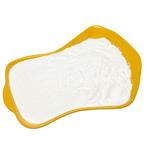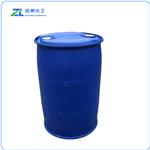Description
δ-valerolactone, also known as 1,5-valerolactone, delta-valerolactone, tetrahydro-2H-2-pyrone, tetrahydro-o-pyrone, tetrahydrocoumarin; the English name is Delta -Valerolactone, the abbreviated name is generally δ -VL or DVL, and the molecular formula is C5H802.
Uses
Due to its good application flexibility, lower biological toxicity, more derivative compounds, easy polymerization and greatly increase the viscosity of coatings and other characteristics, delta-valerolactone is widely used in polyesters, polyurethanes, special solvents, and coatings.
Preparation
In the first step, the 1,5-pentanediol raw material is fed into the drying tower for dehydration, to ensure that the water content is less than 1wt%, under optimized conditions, less than 0.5wt%, further optimization, less than 0.1wt%, further optimization situation , Less than 0.05wt%, that is, 500wppm; in the second step, the dried 1,5-pentanediol is mixed with hydrogen and then enters the vaporizer. The molar ratio of hydrogen to 1,5-pentanediol is 10-5:1 The third step will be vaporized 1,5-pentanediol and hydrogen into the dehydrogenation reactor, under the normal pressure of 0.1MPa, 230-270 conditions, under the action of the dehydrogenation catalyst, 1,5-pentanediol Alcohol is converted into δ-valerolactone, in which the yield of δ-valerolactone exceeds 98%, and the water content of the exported crude product is less than 0.5wt%.
Chemical Properties
clear colorless to pale yellow liquid
Uses
δ-Valerolactone (tetrahydro-2
H-2-pyranone or δ VL) can be used as a monomer unit in the synthesis of poly(δ-valerolactone)s poly(conjugated ester)s via ring-opening polymerization.
It can also be used as a starting material in the synthesis of (+)-guadinomic acid , sodium δ-hydroxyvalerate , methyl δ-hydroxyvalerate , and 5-hydroxyvaleraldehyde.
Uses
δ-Valerolactone is a compound commonly used to synthesize copolyesters by means of lipase-catalyzed ring opening polymerization.
Definition
ChEBI: The simplest member of the class of delta-lactone that is tetrahydro-2H-pyran substituted by an oxo group at position 2.
Flammability and Explosibility
Non flammable
Purification Methods
Purify the -lactone by repeated fractional distillation. IR: max 1750 (in CS2), 1732 (in CHCl3),1748 (in CCl4) and 1733 (in MeOH) cm-1 [Huisgen & Ott Tetrahedron 6 253 1959, Linstead & Rydon J Chem Soc 580 1933, Jones et al. Can J Chem 37 2007 1959]. [Beilstein 17 H 235, 17 II 287, 17 III/IV 4169,17/9 V 17.]





